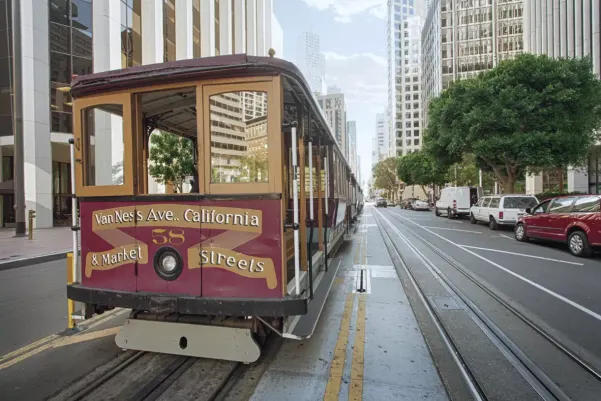San Francisco Cable Cars

The cable car is one of San Francisco’s iconic symbols. There are three cable car routes still in use running through San Francisco that cover Nob Hill to North Beach and Fisherman’s Wharf, California Street from Van Ness to Drumm, and Hyde Street to Ghirardelli Square. Since 1964, the San Francisco cable car system has been designated as a “moving” National Historic Landmark.
Andrew Hallidie, whose father manufactured wire-rope in England, invented the cable car. In 1869, on the steep hills of San Francisco, Hallidie witnessed a horrible accident where five horses pulling a streetcar slipped, and were dragged to their deaths. He had already used wire-rope during the Gold Rush for pulling heavy mining cars out of the ground on tracks, and he began to work on a cable car railway system to deal with San Francisco’s famous hills. By 1873, Hallidie was testing the first cable car system at the top of Nob Hill at Clay and Jones Street.
Cable cars are pulled along by underground cables, which are powered by several 510 horsepower engines. To stop the heavy cable cars, the gripmen use three separate braking mechanisms—a lever in the front of the car, a foot brake, and in the rear a crank at the back of the cable car stops the wheels. Riders can sit inside the cable car, or hang on to the special poles on the side of the car.
The cable car routes are the Powell-Hyde line, Powell-Mason line and the California line, and all stop at Market Street in downtown San Francisco. The fare to ride the cable car is $8.00 each way as of January 2020. Muni passports are also accepted on the cable cars.